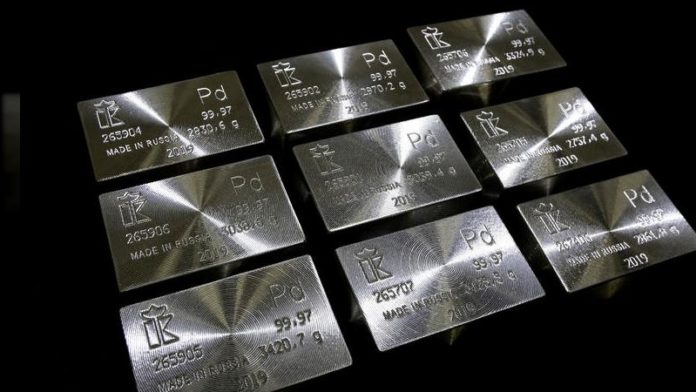
THE double-digit increase in the palladium price on Wednesday was partly due to a proposed 200,000 ounce cut in annual supply of the metal, said Sibanye-Stillwater which last week announced the reduction.
Production from its Stillwater mine in Montana, US is forecast to halve next year to about 200,000 oz/year in order to lower total costs to about $1,000 per oz.
Anticipation of an interest rate cut in the US was another major factor that was probably behind a suspected short squeeze today in forward metal sales. According to the Wall Street Journal today the Federal Reserve will almost certainly unveil its first rate cut since 2020. Actions like this could start to incentivise increased vehicle sales.
“It’s a confluence of things but the market is very illiquid so our production cut at Stillwater is significant,” said James Wellsted, head of corporate affairs at Sibanye-Stillwater.
“There’s an element of Stillwater in this,” said Arnold van Graan, an analyst at Nedbank Securities. “We said previously that to be bullish on the palladium market you would need catalysts including selling more cars and a meaningful production cut. The production cut at Stillwater is about 2% of the market. It doesn’t sound like much, but it’s meaningful.”
Investec Securities estimated there was “pent up demand” for vehicles the equivalent of 1.4 million oz in palladium demand, about 16% of annual demand. In terms of units, this was four million vehicles in the US and 7.4 million in Europe. For rhodium this demand was equal to 156,000 oz or 13% of the metal’s annual demand.
“The elevated vehicle age and pent-up demand in Europe and the US does in our view leverage the PGM (platinum group metal) miners to the soft landing and the interest cutting cycles in these two regions,” the bank said.
The palladium price is currently at $1,109/oz, an increase of 24.3% on the day having fallen 4.5% over the previous seven days.
As the metal was highly illiquid, however, it was given to extreme volatility unlike in the gold industry, said Wellsted. “We have been saying all along though that the signs are positive for PGMs.”
Sibanye-Stillwater last week reported a decline in basic earnings for the six months ended June of just over 100% to R7.47bn, largely owing to weak PGM prices. A taxed loss of R7.1bn was suffered (2023 H1: +R7.8bn).
Commenting on the platinum market earlier this month, Ed Sterck, director of research for the World Platinum Investment Council said sentiment has kept prices low despite evidence for an increased supply deficit this year.
While it was “difficult” to forecast when, investors would eventually take direction from the decline in market fundamentals such as depleted above-ground stocks. “The longer it (low prices) goes on, the more dramatic the response is likely to be,” Sterck said. Above ground stocks were expected to deplete to about four months by the end of the year.









